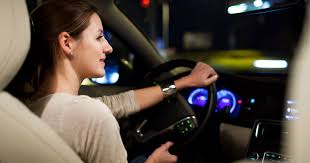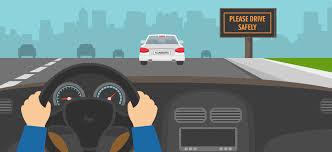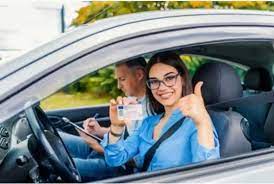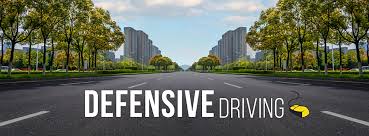Free Car Driving course. How Much Does Driving Class Cost?
Car Driving course:
Learning how to drive a car is an essential life skill that can give you independence, convenience, and freedom to move around without relying on public transportation or others. However, it’s also a significant responsibility that requires knowledge, practice, and patience. In this article, we’ll cover the basics of a free car driving course in under 2000 words.
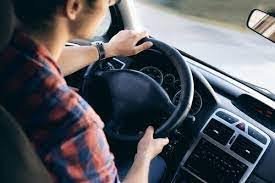
Getting Started
Before you start driving, there are a few essential things you need to do:
- Get a driver’s license: A driver’s license is a legal document that allows you to operate a motor vehicle on public roads. You need to pass a written and practical exam to get a driver’s license. The requirements and procedures vary by state or country, so check with your local Department of Motor Vehicles (DMV) or equivalent.
- Understand your car: Familiarize yourself with the car’s controls and features, such as the steering wheel, pedals, gear shifter, mirrors, and lights. Read the owner’s manual to learn more about the car’s specifications, maintenance, and safety features.
- Practice in a safe area: Find a quiet and empty parking lot or residential area to practice driving without traffic. This will give you a chance to get used to the car’s handling, braking, and acceleration, as well as develop your confidence and skills.
Driving Fundamentals
Once you’re comfortable with the car, it’s time to learn the fundamentals of driving. These include:
- Starting the engine: Insert the key into the ignition and turn it to start the engine. Most modern cars have an automatic transmission, which means you only need to shift to drive or reverse after starting the engine.
- Accelerating and braking: To accelerate, press the gas pedal with your right foot. To brake, press the brake pedal with your right foot. Practice accelerating and braking smoothly and gradually to avoid sudden jerks or stops.
- Steering and turning: To steer, use the steering wheel to control the direction of the car. To turn, signal your intention by using the turn signals or hand signals and slow down before entering the turn. Turn the steering wheel in the direction you want to go, and accelerate gently as you exit the turn.
- Changing lanes: To change lanes, check your mirrors and blind spots to ensure it’s safe to do so. Signal your intention by using the turn signals and move gradually into the new lane. Avoid sudden or abrupt movements that could surprise other drivers.
- Parking: To park, find a suitable parking spot and signal your intention to other drivers. Slow down and position the car parallel to the curb, leaving enough space for other cars to pass. Shift to reverse gear and use the mirrors and rearview camera to guide you. Brake gently as you approach the curb, and turn the steering wheel to align the car with the curb.
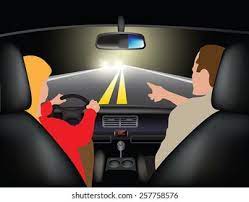
Rules of the Road
To drive safely and legally, you need to follow the rules of the road. These include:
- Speed limits: Always obey the posted speed limits and adjust your speed according to the road conditions, weather, and traffic.
- Traffic signs and signals: Pay attention to traffic signs, signals, and markings, such as stop signs, yield signs, traffic lights, and lane markings. They provide guidance and instructions for safe driving.
- Right-of-way: Yield the right-of-way to other vehicles, pedestrians, or cyclists when required by law or courtesy. For example, yield to pedestrians at crosswalks, and yield to vehicles on the right when approaching an intersection.
- Seat belts: Always wear your seat belt and ensure all passengers do the same. Seat belts are essential for protecting you in case of a crash.
How Much Does Driving Class Cost?
The cost of driving classes in India varies depending on the location, the type of class, and the driving school or instructor. In this article, we’ll provide an overview of the average driving class costs in different Indian cities within 2000 words.
Delhi
In Delhi, the cost of driving classes ranges from Rs. 2000 to Rs. 7000 for a 20-30 day course, depending on the type of class and the driving school. The cost of a 1-hour driving lesson can range from Rs. 200 to Rs. 500. A learner’s license fee is Rs. 150, while a permanent license fee is Rs. 500.
Mumbai

In Mumbai, the cost of driving classes ranges from Rs. 3000 to Rs. 8000 for a 20-30 day course, depending on the type of class and the driving school. The cost of a 1-hour driving lesson can range from Rs. 250 to Rs. 500. A learner’s license fee is Rs. 150, while a permanent license fee is Rs. 500.
Bangalore
In Bangalore, the cost of driving classes ranges from Rs. 2500 to Rs. 7000 for a 20-30 day course, depending on the type of class and the driving school. The cost of a 1-hour driving lesson can range from Rs. 200 to Rs. 500. A learner’s license fee is Rs. 150, while a permanent license fee is Rs. 500.
Chennai
In Chennai, the cost of driving classes ranges from Rs. 2500 to Rs. 7000 for a 20-30 day course, depending on the type of class and the driving school. The cost of a 1-hour driving lesson can range from Rs. 200 to Rs. 500. A learner’s license fee is Rs. 150, while a permanent license fee is Rs. 500.
Kolkata
In Kolkata, the cost of driving classes ranges from Rs. 2000 to Rs. 6000 for a 20-30 day course, depending on the type of class and the driving school. The cost of a 1-hour driving lesson can range from Rs. 200 to Rs. 500. A learner’s license fee is Rs. 150, while a permanent license fee is Rs. 500.
Hyderabad
In Hyderabad, the cost of driving classes ranges from Rs. 2500 to Rs. 7000 for a 20-30 day course, depending on the type of class and the driving school. The cost of a 1-hour driving lesson can range from Rs. 200 to Rs. 500. A learner’s license fee is Rs. 150, while a permanent license fee is Rs. 500.
Pune
In Pune, the cost of driving classes ranges from Rs. 2000 to Rs. 6000 for a 20-30 day course, depending on the type of class and the driving school. The cost of a 1-hour driving lesson can range from Rs. 200 to Rs. 500. A learner’s license fee is Rs. 150, while a permanent license fee is Rs. 500.
Conclusion
The cost of driving classes varies significantly depending on the location, the type of class, and the driving school or instructor. It’s important to choose a reputable and experienced driving school that offers quality instruction and personalized attention to ensure you get the most out of your driving classes. Additionally, be sure to factor in the cost of obtaining a learner’s license and permanent license when considering the overall cost of learning to drive.
Car Driving course:
Learning how to drive a car is an essential life skill that can give you independence, convenience, and freedom to move around without relying on public transportation or others. However, it’s also a significant responsibility that requires knowledge, practice, and patience. In this article, we’ll cover the basics of a free car driving course in under 2000 words.

Getting Started
Before you start driving, there are a few essential things you need to do:
- Get a driver’s license: A driver’s license is a legal document that allows you to operate a motor vehicle on public roads. You need to pass a written and practical exam to get a driver’s license. The requirements and procedures vary by state or country, so check with your local Department of Motor Vehicles (DMV) or equivalent.
- Understand your car: Familiarize yourself with the car’s controls and features, such as the steering wheel, pedals, gear shifter, mirrors, and lights. Read the owner’s manual to learn more about the car’s specifications, maintenance, and safety features.
- Practice in a safe area: Find a quiet and empty parking lot or residential area to practice driving without traffic. This will give you a chance to get used to the car’s handling, braking, and acceleration, as well as develop your confidence and skills.
Driving Fundamentals
Once you’re comfortable with the car, it’s time to learn the fundamentals of driving. These include:
- Starting the engine: Insert the key into the ignition and turn it to start the engine. Most modern cars have an automatic transmission, which means you only need to shift to drive or reverse after starting the engine.
- Accelerating and braking: To accelerate, press the gas pedal with your right foot. To brake, press the brake pedal with your right foot. Practice accelerating and braking smoothly and gradually to avoid sudden jerks or stops.
- Steering and turning: To steer, use the steering wheel to control the direction of the car. To turn, signal your intention by using the turn signals or hand signals and slow down before entering the turn. Turn the steering wheel in the direction you want to go, and accelerate gently as you exit the turn.
- Changing lanes: To change lanes, check your mirrors and blind spots to ensure it’s safe to do so. Signal your intention by using the turn signals and move gradually into the new lane. Avoid sudden or abrupt movements that could surprise other drivers.
- Parking: To park, find a suitable parking spot and signal your intention to other drivers. Slow down and position the car parallel to the curb, leaving enough space for other cars to pass. Shift to reverse gear and use the mirrors and rearview camera to guide you. Brake gently as you approach the curb, and turn the steering wheel to align the car with the curb.

Rules of the Road
To drive safely and legally, you need to follow the rules of the road. These include:
- Speed limits: Always obey the posted speed limits and adjust your speed according to the road conditions, weather, and traffic.
- Traffic signs and signals: Pay attention to traffic signs, signals, and markings, such as stop signs, yield signs, traffic lights, and lane markings. They provide guidance and instructions for safe driving.
- Right-of-way: Yield the right-of-way to other vehicles, pedestrians, or cyclists when required by law or courtesy. For example, yield to pedestrians at crosswalks, and yield to vehicles on the right when approaching an intersection.
- Seat belts: Always wear your seat belt and ensure all passengers do the same. Seat belts are essential for protecting you in case of a crash.
How Much Does Driving Class Cost?
The cost of driving classes in India varies depending on the location, the type of class, and the driving school or instructor. In this article, we’ll provide an overview of the average driving class costs in different Indian cities within 2000 words.
Delhi
In Delhi, the cost of driving classes ranges from Rs. 2000 to Rs. 7000 for a 20-30 day course, depending on the type of class and the driving school. The cost of a 1-hour driving lesson can range from Rs. 200 to Rs. 500. A learner’s license fee is Rs. 150, while a permanent license fee is Rs. 500.
Mumbai

In Mumbai, the cost of driving classes ranges from Rs. 3000 to Rs. 8000 for a 20-30 day course, depending on the type of class and the driving school. The cost of a 1-hour driving lesson can range from Rs. 250 to Rs. 500. A learner’s license fee is Rs. 150, while a permanent license fee is Rs. 500.
Bangalore
In Bangalore, the cost of driving classes ranges from Rs. 2500 to Rs. 7000 for a 20-30 day course, depending on the type of class and the driving school. The cost of a 1-hour driving lesson can range from Rs. 200 to Rs. 500. A learner’s license fee is Rs. 150, while a permanent license fee is Rs. 500.
Chennai
In Chennai, the cost of driving classes ranges from Rs. 2500 to Rs. 7000 for a 20-30 day course, depending on the type of class and the driving school. The cost of a 1-hour driving lesson can range from Rs. 200 to Rs. 500. A learner’s license fee is Rs. 150, while a permanent license fee is Rs. 500.
Kolkata
In Kolkata, the cost of driving classes ranges from Rs. 2000 to Rs. 6000 for a 20-30 day course, depending on the type of class and the driving school. The cost of a 1-hour driving lesson can range from Rs. 200 to Rs. 500. A learner’s license fee is Rs. 150, while a permanent license fee is Rs. 500.
Hyderabad
In Hyderabad, the cost of driving classes ranges from Rs. 2500 to Rs. 7000 for a 20-30 day course, depending on the type of class and the driving school. The cost of a 1-hour driving lesson can range from Rs. 200 to Rs. 500. A learner’s license fee is Rs. 150, while a permanent license fee is Rs. 500.
Pune
In Pune, the cost of driving classes ranges from Rs. 2000 to Rs. 6000 for a 20-30 day course, depending on the type of class and the driving school. The cost of a 1-hour driving lesson can range from Rs. 200 to Rs. 500. A learner’s license fee is Rs. 150, while a permanent license fee is Rs. 500.
Conclusion
The cost of driving classes varies significantly depending on the location, the type of class, and the driving school or instructor. It’s important to choose a reputable and experienced driving school that offers quality instruction and personalized attention to ensure you get the most out of your driving classes. Additionally, be sure to factor in the cost of obtaining a learner’s license and permanent license when considering the overall cost of learning to drive.



